Clancy Tucker's Blog, page 86
March 27, 2020
28 March 2020 - 'ADAM'S CALENDAR' IN SOUTH AFRICA
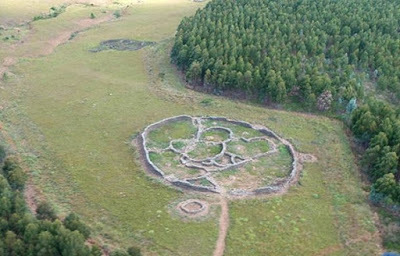
'ADAM'S CALENDAR' IN SOUTH AFRICA
G'day folks,
Welcome to another weird and wonderful formation, found by pure chance. Hidden in the hills is a mysterious stone structure, known only to a few.
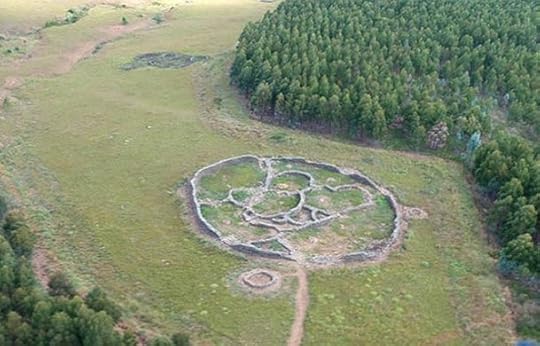
In 2003, South African pilot Johan Heine was flying over the hills of the gorgeous Mpumalanga region of South Africa when he crashed his plane into the mountainside. After exiting the plane, Heine saw before him three monolithic, five-ton dolomite stones sticking out of the ground, and behind them a giant stone circle.
Known to only a select few and accessible solely by rough dirt roads past the wild horses of Kaapschehoop, the megalithic stone calendar is dubbed Adam’s Calendar. With the shape of a circle and a diameter of 100 feet, it is nicknamed the “Birthplace of the Sun” and dubbed “Africa’s Stonehenge.” As with many similar stone monuments, it loosely aligns with the celestial world.

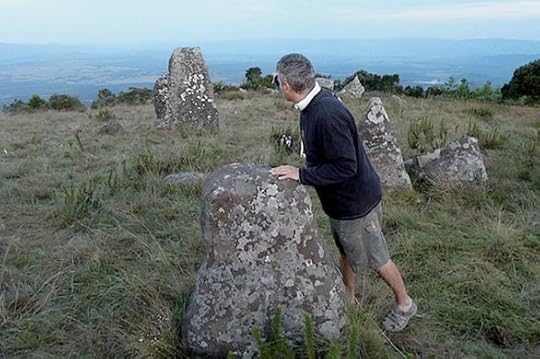
The stone circle generated a fair amount of buzz after Michael Tellinger, a writer, claimed it is the oldest manmade structure in the world and was made by a vanished civilization. However, his claims have been widely disputed. As of now, the true age, origin, and purpose of Adam’s Calendar remains a mystery that is yet to be solved.

Clancy's comment: Amazing how it was found, eh?
I'm ...

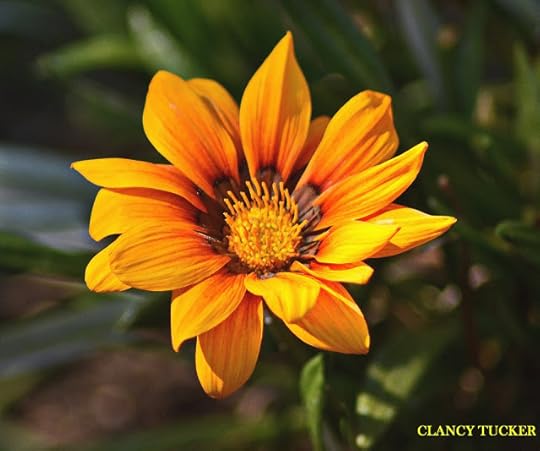
Published on March 27, 2020 14:08
March 26, 2020
27 March 2020 - Stunning Sudwala Caves in South Africa

Stunning Sudwala Caves in South Africa
G'day folks,These otherworldly caverns form Earth's oldest known cave system. The Sudwala Caves in Mpumalanga, South Africa, are the oldest known caves in the world. They began to form about 240 million years ago as natural acid in groundwater seeped through the faults and joints of the region’s Precambrian dolomite rock. To put that unimaginable length of time into some context, when the cave formation began, Africa was still a part of Gondwana, the supercontinent that incorporated present-day South America, Africa, Arabia, Madagascar, India, Australia, and Antarctica.
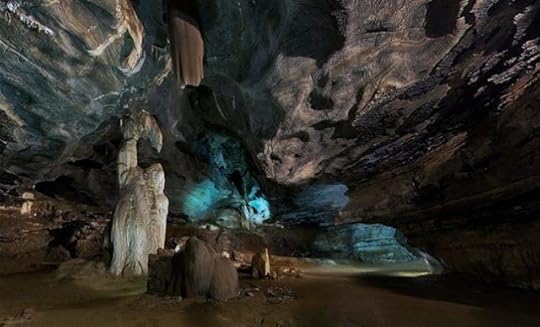 The caves are part of the Malmani Dolomite Ridge. Near the entrance to the system is a massive chamber measuring 230 feet (70 meters) in diameter and 121 feet (37 meters) high from the center of the chamber to its dome-like ceiling. The chamber is known as the PR Owen Hall, after Philippus Rudolf Owen. In 1965, Owen purchased the land on which the caves are found and opened them up to the public. Many other named features exist within the spectacular cave system, which stretches for many miles. There are strange speleothem structures—stalagmites, stalactites, and flowstones —with names like Samson’s Pillar, the Rocket, and the Screaming Monster. These began to form between 140 and 200 million years ago; the growth rate for a stalactite in the Sudwala Caves is about one inch (2.5 centimeters) per century. Other nooks and bizarre outcroppings bear titles such as the Devil’s Workshop and Fairyland, while a natural pattern on the ceiling of one chamber is known as the Map of Africa.
The caves are part of the Malmani Dolomite Ridge. Near the entrance to the system is a massive chamber measuring 230 feet (70 meters) in diameter and 121 feet (37 meters) high from the center of the chamber to its dome-like ceiling. The chamber is known as the PR Owen Hall, after Philippus Rudolf Owen. In 1965, Owen purchased the land on which the caves are found and opened them up to the public. Many other named features exist within the spectacular cave system, which stretches for many miles. There are strange speleothem structures—stalagmites, stalactites, and flowstones —with names like Samson’s Pillar, the Rocket, and the Screaming Monster. These began to form between 140 and 200 million years ago; the growth rate for a stalactite in the Sudwala Caves is about one inch (2.5 centimeters) per century. Other nooks and bizarre outcroppings bear titles such as the Devil’s Workshop and Fairyland, while a natural pattern on the ceiling of one chamber is known as the Map of Africa.

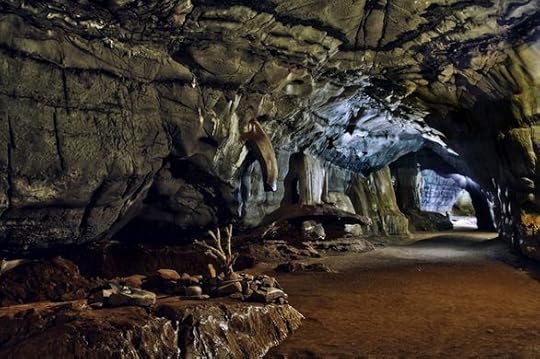
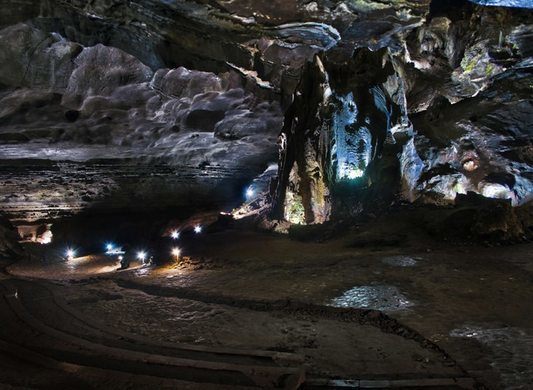
Apart from primitive microbial fossils and a colony of about 800 horseshoe bats, signs of life inside the Sudwala Caves are scarce.
Humans, however, have made their mark. Homo habilis, one of the earliest members of the genus Homo, lived in the caves around 1.8 million years ago, and some of their primitive stone tools have been found inside, along with archaeological finds dating to a few thousand years B.C. (some of these artifacts are displayed near the cave entrance).
Far more recently, the caves served as a fortress and refuge for the Swazi prince Somquba. In the mid-1800s, Somquba was locked in a power struggle with his brother and heir apparent, Mswati. During the conflict, Somquba used the caves as a refuge with its own source of fresh water and plenty of room to stockpile food and house cattle.
It was also a natural fortress, with a narrow entrance that could be easily watched and defended. Many battles took place at the entrance, which was under the charge of Sudwala, Somquba’s captain, after whom the caves were named. On various occasions, Mswati’s forces tried to smoke Sudwala and his men out of the cave, or suffocate them inside it, by starting fires at the entrance (burn marks can still be seen today). But due to a natural flow of air which exists inside the cave—the source of which is still unknown—Somquba and Sudwala were able to survive.

The caves were later used by the Boers to store ammunition during the Second Boer War, which lasted from 1899 to 1902. At the end of the war, rumors began to circulate that President Paul Kruger had hidden a hoard of gold in the caves to protect it from the British.
Known as the “Kruger Millions,” the treasure trove of gold coins is estimated to be worth around U.S. $500,000,000 in today’s terms. It still hasn’t been found.
Since the 1970s, the main chamber of the Sudwala Caves has also been used as a concert hall. Capable of seating 500 people, it apparently has fantastic acoustics and a pleasant temperature, the latter thanks to the same flow of fresh air, the origin of which is still unknown, that saved Somquba.

Clancy's comment: Wow. Interesting what you may find in a cave.
I'm ...


Published on March 26, 2020 13:49
March 25, 2020
26 March 2020 - INSPIRING QUOTES WORTH READING

INSPIRING QUOTES WORTH READING
G'day folks,
It's time for some more of those inspiring quotes.

















Clancy's comment: The one of the little girl and the dog is my fave.
I'm ....

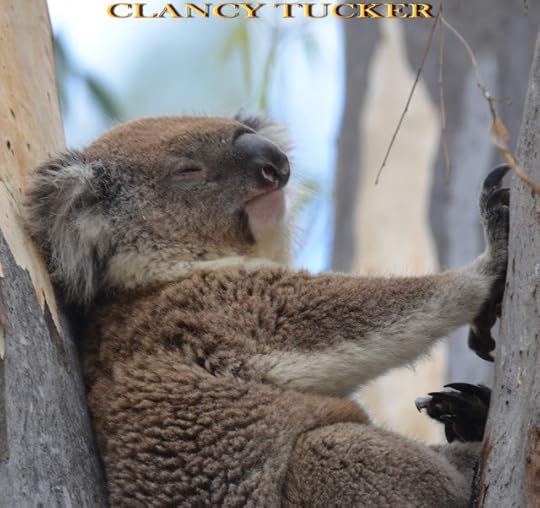
Published on March 25, 2020 14:37
March 24, 2020
25 March 2020 - Abandoned Ussana Brick Factory in Italy

Abandoned Ussana Brick Factory in Italy
G'day folks,
Yes, I've found another abandoned structure. This one is in Ussana, Italy, where an eerie gravel road full of shards of red bricks leads to the ruins of a deserted factory.
The sand makes a high clinking noise as the shards of broken tiles are crushed under your footsteps along the red brick road. The path leads to an abandoned brick and tile factory, known as La Ceramica, that during its heyday in the 1940s and ’50s helped rebuild wartorn Sardinia.

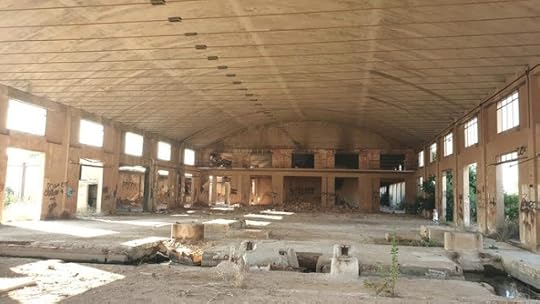

The site consists of two main buildings, the factory and an office, that were shuttered in the 1980s and left forgotten. Piles of red bricks are strewn all around, left behind when the factory was abandoned. Some of them have been smashed and become crimson sand glittering in the sunset, while the light casts long shadows from the broken doors and windows.
Delicate spiral stairs lead to the upper level, which has a firing kiln in the middle and thousands of tiles piled into rows. There are parts of beautiful brick ornaments still on the walls. On the ground level, there are two massive firing tunnels and a tall, empty hall where rainwater-filled pools on the floor reflect the open interior.

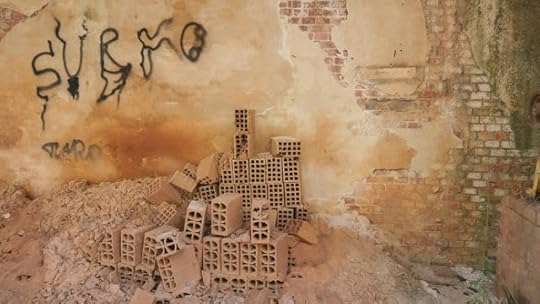
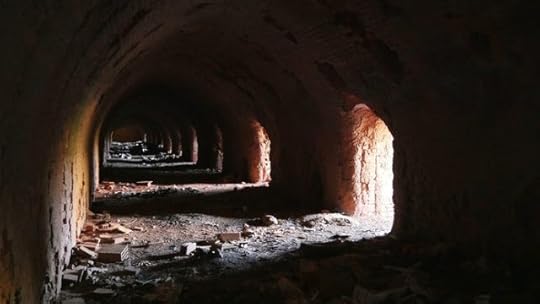
In the office building, the shower room is completely demolished and the windows of the offices are sealed with bricks, of course. The walls are covered in graffiti from the past decades: “bum bum bum,” “Pink Floyd,” “Marco and Maria 8/8/1986.” Peacefully buzzing bees have taken over the empty rooms. The sounds of nature are intense, as grasshoppers, insects, and birds are now the only sounds in this empty factory surrounded by fields and forests.
 Clancy's comment: No, I'm not obsessed with abandoned buildings, but I am curious about them. There are so many of them jotted around the world. I mean, check out that spiral staircase above. What a waste.
Clancy's comment: No, I'm not obsessed with abandoned buildings, but I am curious about them. There are so many of them jotted around the world. I mean, check out that spiral staircase above. What a waste.I'm ...


Published on March 24, 2020 13:46
March 23, 2020
24 March 2020 - A South African bar inside a hollowed out 6,000-year-old Baobab
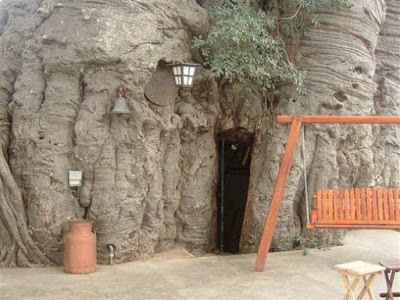
A South African bar inside a hollowed out 6,000-year-old Baobab
G'day folks,
Sunland Baobab in Limpopo, South Africa, is a one stop shop for finishing off a bucket list.
Physically, the giant tree ranks at the top of many lists. It is one of the largest baobabs in South Africa, and at a whopping 72 feet high and 155 feet around, the widest on the entire continent.
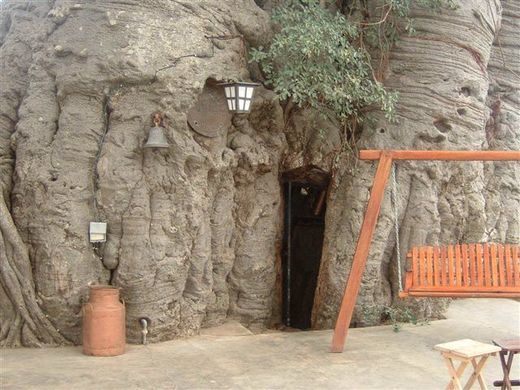
Besides its remarkable dimensions, the baobab is also one of the oldest trees on Earth. According to some estimates, Sunland Baobab is 6,000 years old. While there is some controversy regarding the age, carbon dating has placed the tree easily past the millennium mark, putting Sunland Baobab among the ranks of California’s legendary sequoias.
To add to the wonder of the species, Baobabs naturally hollow out after 1,000 years. Sunland may have passed that mark generations ago, and as such has hollowed to such a point that the owners of the land, the van Heerden family, created a small pub inside the space. Amazingly, the rustic bar has 13-foot high ceilings and can comfortably fit 15 people. Mrs. van Heerden even claimed to have once put 40 full-size adults inside for a party.
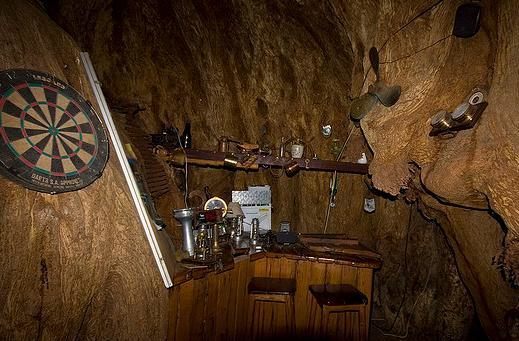
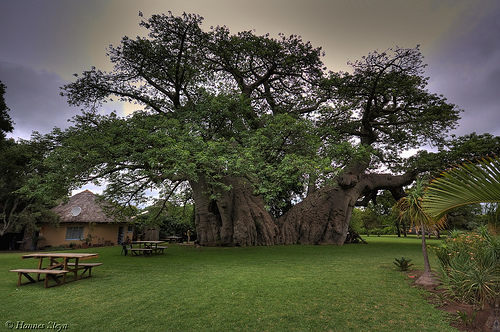
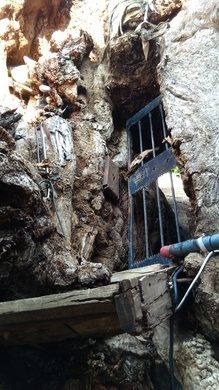
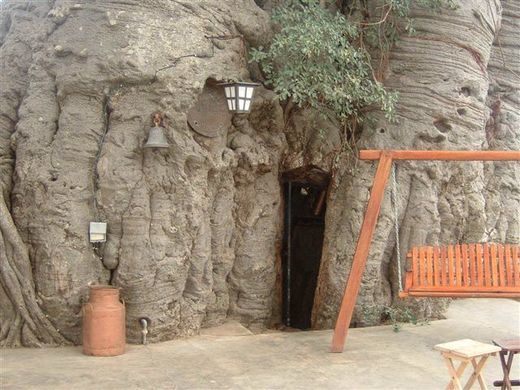
Visitors wishing to grab a pint inside Sunland can even spend the night in one of five local Jungalows on the property to complete the full safari party experience.
Update: The giant tree trunk split and a third of it collapsed in April, 2016, likely due to its age. It is unclear whether the section with the bar was effected by the collapse.
Update May 2019: The bar is still open, though it’s run-down and in rather rough shape.
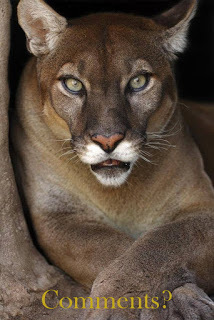
Clancy's comment: What a great idea, and I bet it's really cool in summer.
I'm ...

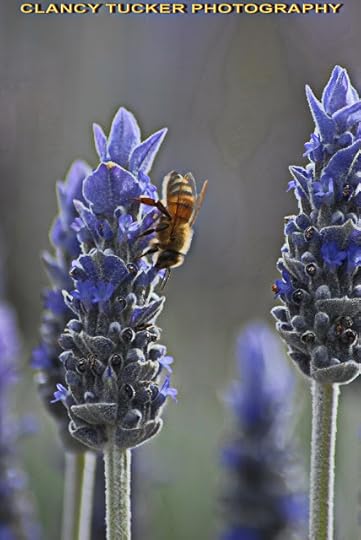
Published on March 23, 2020 13:03
March 22, 2020
23 March 2020 - PAINTED AUSTRALIAN GRAIN SILOS BECOME TOURIST ATTRACTION

PAINTED AUSTRALIAN GRAIN SILOS BECOME TOURIST ATTRACTION
G'day folks,
These amazing murals painted on massive grain silos have become a major tourist attraction near where I live. The artists are simply incredible when you see how massive their 'canvas' is. It has become known as the Silo Art Trail.
The Silo Art Trail is Australia’s largest outdoor gallery. The trail stretches over 200 kilometres, linking Brim with neighbouring towns Lascelles, Patchewollock, Rosebery, Rupanyup and Sheep Hills.
Providing an insight into the true spirit of the Wimmera Mallee, the trail recognises and celebrates the region’s people through a series of large-scale mural portraits painted onto grain silos, many of which date back to the 1930s.

The project saw a team of renowned artists from Australia and across the world visit the region, meet the locals and transform each grain silo into an epic work of art; each one telling a unique story about the host town.
The Silo Art Trail was conceived in 2016 after the success of the first silo artwork in Brim. What started as a small community project by the Brim Active Community Group, GrainCorp, Juddy Roller and artist, Guido van Helten resulted in widespread international media attention and an influx of visitors to the region and the idea for a trail was born.

The Silo Art Trail was created as a partnership between Yarriambiack Shire Council, international street art agency Juddy Roller, Victorian Government, Australian Government and GrainCorp, who donated the silos as canvases for the artists’ work.
Now, check out this masterful work.

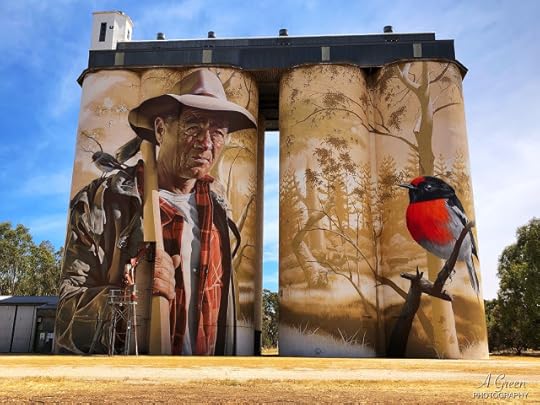



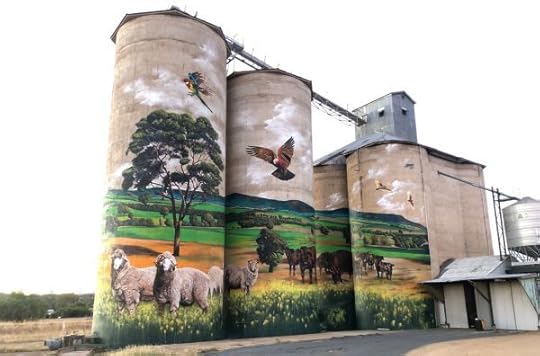

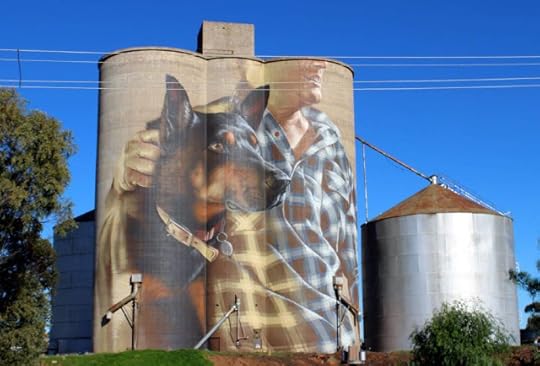

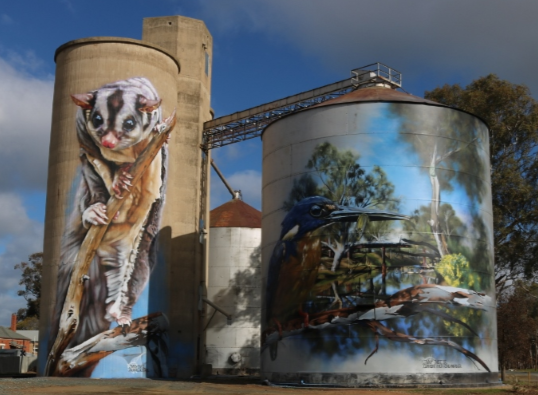

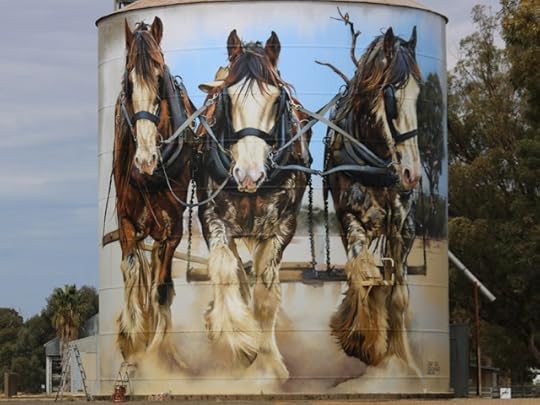

Clancy's comment: Brilliant artwork, eh? Hey, if you are coming to visit us, make sure you check out these gob smacking masterpieces.
I'm ...
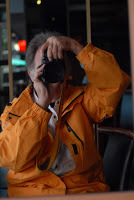

Published on March 22, 2020 13:58
March 21, 2020
22 March 2020 - GARRIS L. R. COLEMAN - GUEST AUTHOR

GARRIS L. R. COLEMAN - GUEST AUTHOR -
G'day folks,
Today, I interview an aspiring author fom Augusta, Georgia, USA.
Welcome, Garris ...
1. TELL US A LITTLE ABOUT YOURSELF AND YOUR WRITING JOURNEY.
My name is Garris Lee Reid Coleman, I’m the author of the original series Curse of Crowns. I enjoy art of all forms such as books, music, and painting. I play several musical instruments and have been writing song lyrics since I was fourteen.
2. WHEN AND HOW DID YOU BECOME A WRITER?
I originally started off with wanting to make a video game. So, I came up with a design concept that was a rough idea but eventually it developed into a novel as I kept writing.
3. WHAT TYPE OF PREPARATION DO YOU DO FOR A MANUSCRIPT? DO YOU PLAN EVERYTHING FIRST OR JUST SHOOT FROM THE HIP?
I do like to make preparations.
I look up names, I research different topics so that I can get all of the technical terminology correct.
5. WHAT IS THE HARDEST THING ABOUT BEING A WRITER?
Marketing yourself and getting in front of the right audience.
6. WHAT WERE YOU IN A PAST LIFE, BEFORE YOU BECAME A WRITER?
In my past life I most definitely was a pirate.
7. WHAT IS YOUR GREATEST WRITING ACHIEVEMENT?
My novel series Curse of Crowns.
8. WHAT ARE YOU WORKING ON AT THE MOMENT?
I am working on finishing the second volume of Curse of Crowns series, which is titled, Blood You Will Taste.

9. WHAT INSPIRES YOU?
I love to see when people set out to do something and finish it. It doesn’t matter what it is. I love to see others reach their goals.
10. WHAT GENRE DO YOU WRITE?
I write in fantasy fiction.
11. DO YOU HAVE ANY TIPS FOR NEW WRITERS?
Don’t listen to others who would try to discourage you from finishing your work. Do what you love and love what you do, then it won’t feel like a job.
12. DO YOU SUFFER FROM WRITER’S BLOCK?
No, I have learned how to tap into my creative side. I just need a pair of headphones and some soft music and I’m off to my imagination.
13. DO YOU HAVE A PREFERRED WRITING SCHEDULE?
I prefer to write and create most of the day. I’m always trying to come up with new ideas.
14. DO YOU HAVE A FAVOURITE WRITING PLACE?
I love to kick back in my bed and use my laptop.
15. WHAT IS YOUR GREATEST JOY IN WRITING?
When I finish adding another page.
16. WHO IS YOUR FAVOURITE AUTHOR AND WHY?
I don’t have a favourite author, I just like to see what others create. My favourite screenwriters are John Logan, Andrew Hinderaker, and Krysty Wilson-Cairns. Together they wrote the show Penny dreadful. The dialog between the characters and the narration is brilliant.
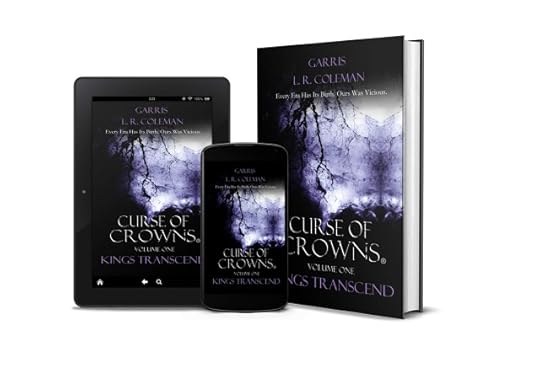
17. WHAT’S THE GREATEST COMPLIMENT YOU EVER RECEIVED FROM A READER?
That they could not put my novel down and that they dream about it.
18. WHAT WAS THE WORST COMMENT FROM A READER?
It’s not something I focus on. I have not received any negative comments, but I’m sure they are coming.
19. WRITERS ARE SOMETIMES INFLUENCED BY THINGS THAT HAPPEN IN THEIR OWN LIVES. ARE YOU?
Sometimes I have a moment where I’m influenced by a situation and I will change the names, alter the events and add it into the story.
20. OTHER THAN WRITING, WHAT ELSE DO YOU LOVE?
I love to play music. Drums, Guitar, Cello, whatever I can get my hands on.
21. DID YOU HAVE YOUR BOOK / BOOKS PROFESSIONALLY EDITED BEFORE PUBLICATION?
I always have the books edited several times before publication.
22. DESCRIBE YOUR PERFECT DAY.
A perfect day would be to sleep without having an alarm.
23. IF YOU WERE STUCK ON A DESERT ISLAND WITH ONE PERSON, WHO WOULD IT BE? WHY?
I would love to be stuck on a desert island. I would most definitely choose my beautiful wife.
24. WHAT WOULD YOU SAY IF YOU HAD THE CHANCE TO SPEAK TO WORLD LEADERS?
You should work on helping your people be free and cut down on all the conflict. People want to live peacefully and prosper.

25. WHAT ARE YOUR PLANS FOR THE FUTURE?
To become a full-time writer.
26. WHAT ARE YOUR VIEWS ON BOOK TRAILERS? DO THEY SELL BOOKS?
I love book trailers. I have two for my first novel and working on a trailer for the second one. I think they do help sell books. They also help set the mood and can get others interested and talking about your book.
27. DO YOU SEE YOURSELF IN ANY OF YOUR CHARACTERS?
I have one character that always finds himself getting into a not so good situation. I would say that happens to me sometimes.
28. DOES THE PUBLISHING INDUSTRY FRUSTRATE YOU?
Yes, the traditional publishing industry can frustrate me. I’m glad that the author can choose to self-publish. There are a lot of talented writers that have worked hard on their stories and now they can be available to readers.
29. DID YOU EVER THINK OF QUITTING?
Never. I have come too far to give up now.
30. WHAT WAS YOUR FAVOURITE MANUSCRIPT TO WRITE? WHY?
My favourite manuscript to write was the third novel in the Curse of Crowns series.
The characters are fun to write. They have so much going on in their worlds and I love the excitement.
31. HOW WOULD YOU DEFINE ‘SUCCESS’ AS A WRITER?
If you have pushed through the toughness, not given up, and have published your work whether it be traditionally or self-published, you are already a successful writer. If you make money along the way with it, then that’s just icing on the cake.
32. WHAT SHOULD READERS WALK AWAY FROM YOUR BOOKS KNOWING? HOW SHOULD THEY FEEL?
After reading my books, I want readers to know that original ideas still exist.
My hope is that they could relate to any of the characters.

33. WOULD YOU LIKE TO HAVE YOUR BOOKS MADE INTO MOVIES? EVER WRITTEN A SCREENPLAY?
If that were to ever happen, I would rather it be made into a TV series. Movies are so rushed and with a TV series the characters can have a little more time to be developed.
I have never written a screenplay.
34. HOW MUCH THOUGHT GOES INTO DESIGNING A BOOK COVER?
With my Curse of Crowns series, I tried to put certain things that are in the books onto the covers. The cover is telling its own sort of story.
I also think about the art that goes inside the novel. For example, the chapter headings, the maps, and the previews to the next series. Having it all helps to tell a story and bring the reader on a journey.
35. WHAT’S YOUR ULTIMATE DREAM?
To have millions of books sold.
36. WRITING IS ONE THING. WHAT ABOUT MARKETING YOU, YOUR BOOKS AND YOUR BRAND? ANY THOUGHTS?
For me creating stories for my series is easy. Marketing and building a platform is hard. If you have the money and can afford it, I would suggest hiring a marketing team.
37. ARE YOUR BOOKS SELF-PUBLISHED?
Yes. I chose that route after doing research and learning about how the traditional publishing industry works.
38. DESCRIBE YOURSELF IN FIVE WORDS.
Creative, witty, artistic, inquisitive, and rebellious.
39. WHAT PISSES YOU OFF MOST?
Being told I am not capable of something.
40. WHAT IS THE TITLE OF THE LAST BOOK YOU READ? GOOD ONE?
Chinese Myths & Tales by Davide Latini. Yes, I enjoyed it.

41. WHAT WOULD BE THE VERY LAST SENTENCE YOU’D WRITE?
Take your shoes off and stay as long as you like.
42. WHAT WOULD MAKE YOU HAPPIER THAN YOU ARE NOW? CARE TO SHARE?
To have more novels out for my readers.
43. ANYTHING YOU’D LIKE TO ADD?
Yes, go buy my books, Now!

AMAZON

Clancy's comment: Well done, Garris. Love the book covers, and your love of music. Keep going ...
I'm ...

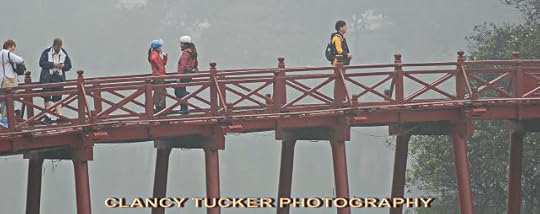
Published on March 21, 2020 14:14
March 20, 2020
21 March 2020 - New Life for Abandoned Djúpavík Herring Factory in Iceland

New Life for Abandoned Djúpavík Herring Factory in Iceland
G'day folks,
Yep, you guessed it, I've found another abandoned structure. This one is in Iceland, but this rusting remnant of the local herring industry is being given a second life.
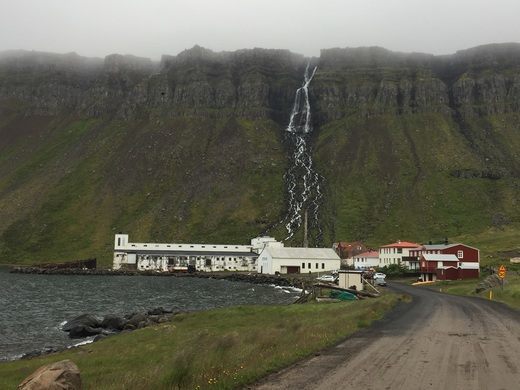
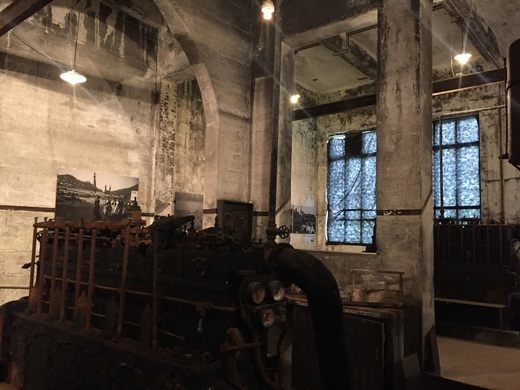

Getting to the remote Icelandic village of Djúpavík entails traveling miles away from the nearest town on a bumpy, narrow, winding dirt road through a desolate landscape of fjords, sheep, and little else. This isolated village built up around its herring factory, and has risen and fallen with the local fishing industry throughout the 20th century.
The now-abandoned herring processing factory in Djúpavík was the biggest one in Iceland—in fact, the biggest concrete structure in Iceland, period—when it opened in 1935. But that new-and-improved building was actually the second herring factory in the village, which was first settled in 1917 around the fishing industry, but abandoned when business slowed.


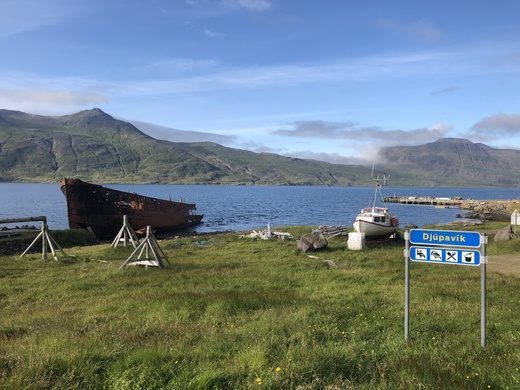
The new factory opened in 1935, fitted with all the latest modern equipment for processing herring. But when the staff of around 300 moved to the sleepy village to work in the impressive factory, they were surprised by the surrounding town’s complete lack of churches, police, or even a mayor.
Over the next several years, a town was built up around the factory. But by the late 1940s, the herring were all but gone from Húnaflói bay, and the factory folded in 1954. The town of Djúpavík was abandoned by 1968.
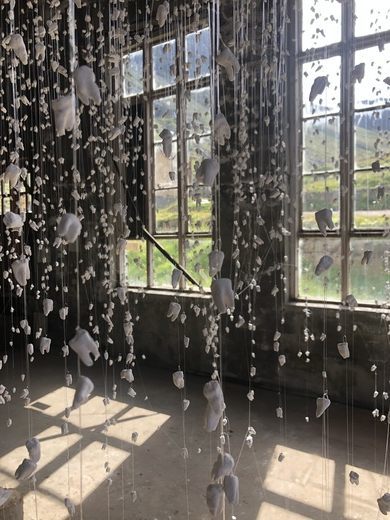
Then in 1985, Eva Sigurbjörnsdóttir and her husband Ásbjörn Þorgilsson became the village’s only year-round residents. They turned the former women’s quarters into a hotel, and began refurbishing the old factory and other buildings.
Hotel Djúpavík now offers tours through the giant, rusting old factory. Today the space features artworks and installations, and hosts “the Factory” every summer, an event with concerts, events, and exhibitions with works from artists around the world. In 2006, Sigur Rós played an intimate show there for a crowd of 300 people who made the trek out to Djúpavík.

Clancy's comment: Sounds good. Anything to utilise old buldings and promote the arts is worthwhile.
I'm ...


Published on March 20, 2020 13:34
March 19, 2020
20 March 2020 - AMAZING PHOTOGRAPHS FROM THE PAST

AMAZING PHOTOGRAPHS FROM THE PAST
G'day folks,
It's time to look back on life and check out some amazing shots from yesteryear.





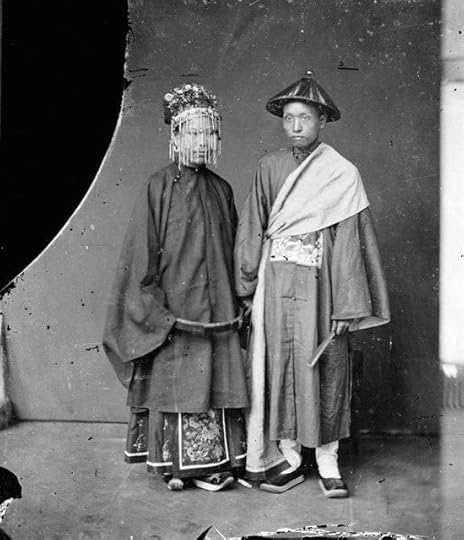



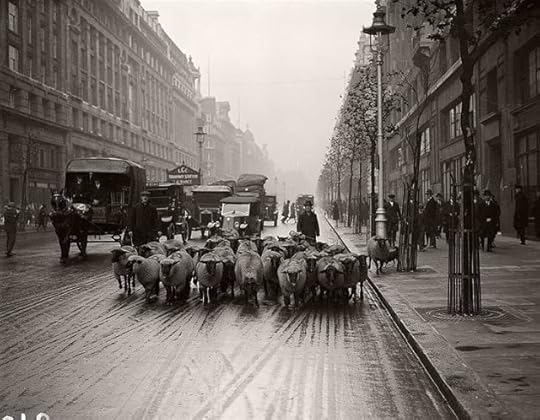

Clancy's comment: Yep, the fashions always bring a smile to my face.
I'm ...
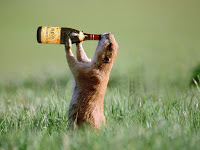

Published on March 19, 2020 13:54
March 18, 2020
19 March 2020 - LOST ENGLISH WORDS

LOST ENGLISH WORDS
G'day folks,
The English language is evolving all the time. Check out these words that seem to have disappeared from use.
bubulcitate v 1623 -1678 to act as a cowherd; to cry like a cowherd When their cat went missing, they were on the street bubulcitating for weeks.
buccellation n 1657 -1731 act of dividing into small morsels The buccellation and apportionment of their rations was the subject of heated argument.
bumposopher n 1834 -1886 one learned in bumps; a phrenologist Craniology has progressed greatly since the days of bumposophers.
cacatory adj 1684 -1753 accompanied by loose bowels For the diners, the effects of the chicken cacciatore, alas, were cacatory.
cacozealous adj 1656 -1696 imitating badly; poorly affected Her cacozealous attempt at mimicking her boss bordered on being offensive.
cagastric adj 1662 -1753 of diseases, originating under an ill star We no longer believe in cagastric causes for illness and deformity.
cameranious adj 1791 -1791 of or relating to a chamber
The social gathering benefited from the cozy, cameranious setting.

Clancy's comment: Is it any wonder they have fallen by the wayside?
I'm ...

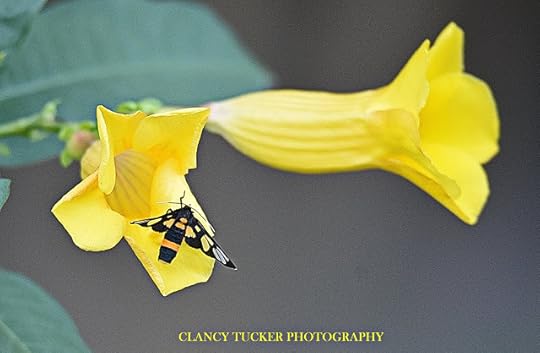
Published on March 18, 2020 13:25



